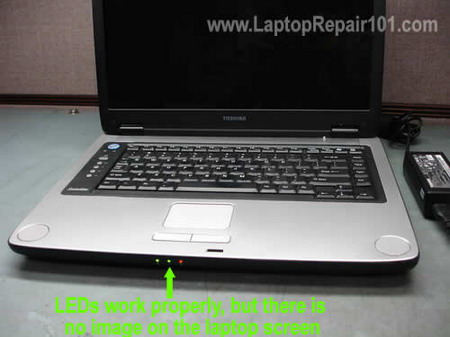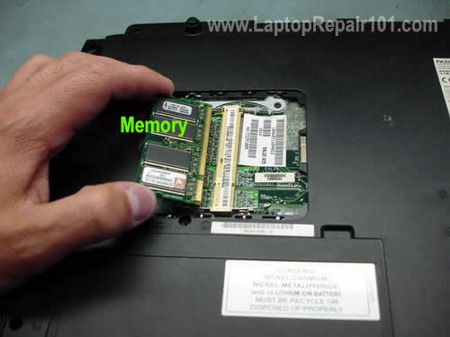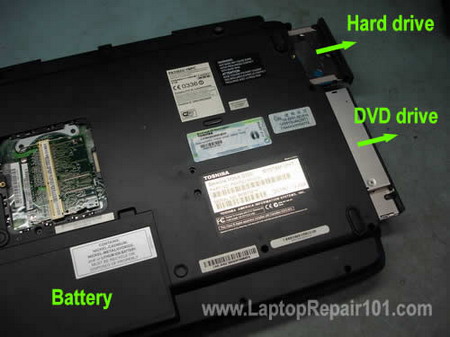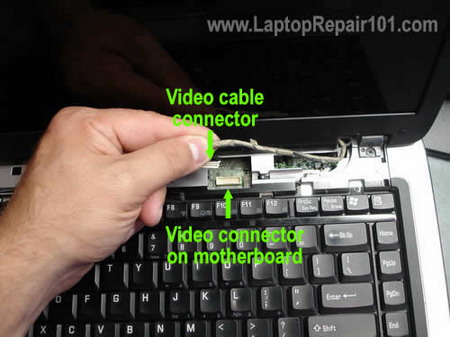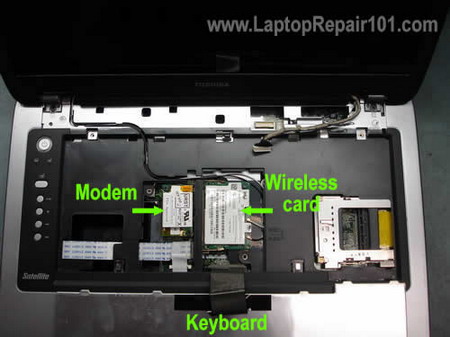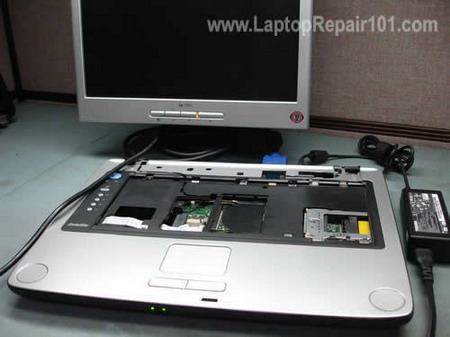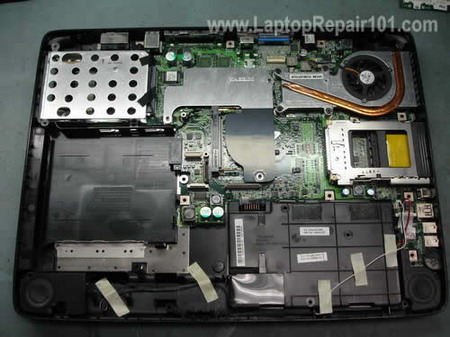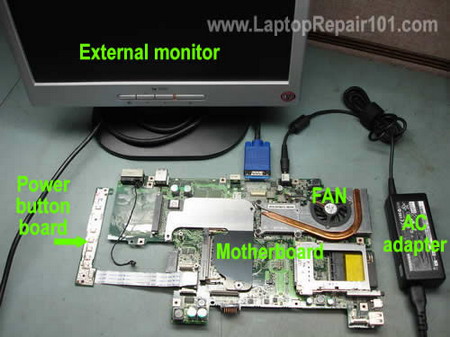How to fix video problem on HP laptops:
In this post I explain how you can fix a known video problem on some HP laptops without actually taking it apart. Most likely the fix is not permanent but this will buy you some time, enough to backup personal files or even use the laptop until you get a new one. There is no guaranty this fix work 100%.
Here are some HP models affected by this known video failure problem: HP Pavilion dv2000, dv6000, dv9000, tx1000 tablet PC, Compaq 700, v3000, v6000 and probably some others.
If you know more models, please mention them in comments after this post.

I found this trick mentioned by Walliot (comment 85) in this post. This trick called “towel fix” and used to fix “no video” issue in xbox360.
2. Plug the AC adapter and turn on the laptop. Make sure the laptop is actually on, all LEDs should work.
3. Wrap the laptop with towels so all air intakes are closed.
4. Keeps the laptop wrapped in the towel for about one hours.
5. Unplug the AC adapter from the wall the let the laptop cool down (do not touch it for a while).
6. Unwrap the laptop and try tuning it on.
I didn’t really believe that this trick might work and tried it just because of curiosity but… IT WORKED!!!!
LAPTOP #1. HP tx1000 Tablet PC.

First, I tried this fix on a failed HP tx1000 Tablet PC.
I didn’t have paper towels at work but I had plenty of bubble wrap.
I closed the laptop in a tablet mode (with hard drive and battery removed), plugged the AC adapter and wrapped the laptop properly in bubble wrap.

After that I just waited for about two hours and unplugged AC adapter from the wall.
Waited for about 30 minutes and tried turning it on.
Success!!! The laptop started with video.

I just couldn’t stop and tried the fix on another failed laptop.
LAPTOP #2. HP Pavilion dv6000.
This is a different model with very similar failure symptoms. It turns on, all LED lights work but there is no video.
This time I didn’t something extra. To make sure there is no cool air coming into the laptop though bubble wrap, I closed all air vents with sticky tape.
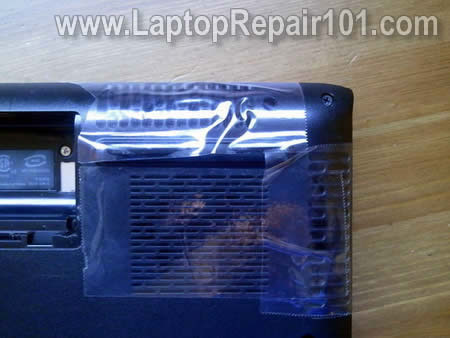
After that I turned on the laptop from AC adapter (again with hard drive and battery removed) and wrapped the laptop base with bubble wrap.
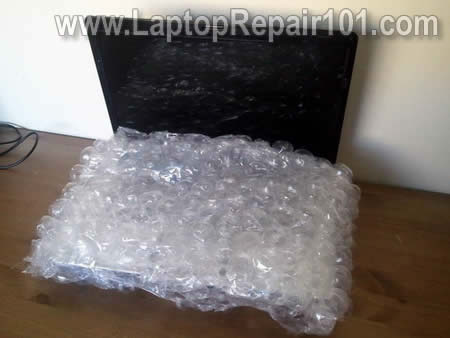
The laptop was running like that for about 60-70 minutes but then I noticed that all LED lights went off. Not sure what happened, maybe the laptop overheated too much and shut down on its own. Anyway, I didn’t touch it for about 30 minutes and let it cool down.
My fix was successful again! The laptop turned on with video and booted to the desktop.
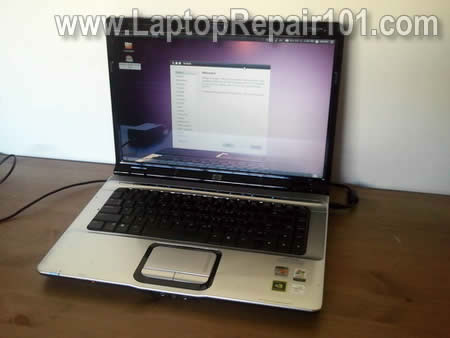
When you run a laptop wrapped in towels (bubble wrap in my case), it gets very hot because there is no air circulation inside the heatsink. The heatsink and GPU (NVIDIA chip) run so hot that it melt solder between the chip and motherboard and the video chip gets resoldered to the motherboard.
Now I have to test for how long this fix last.
In one of the following posts I explain how to reflow failed NVIDIA graphics chip with a heat gun.
Read More..
In this post I explain how you can fix a known video problem on some HP laptops without actually taking it apart. Most likely the fix is not permanent but this will buy you some time, enough to backup personal files or even use the laptop until you get a new one. There is no guaranty this fix work 100%.
Here are some HP models affected by this known video failure problem: HP Pavilion dv2000, dv6000, dv9000, tx1000 tablet PC, Compaq 700, v3000, v6000 and probably some others.
If you know more models, please mention them in comments after this post.

CAUSE OF THE PROBLEM:As I know, the video problem somehow related to NVIDIA chip located on the motherboard. Overtime the NVIDIA chip separates from the motherboard and the laptop video fails.
SYMPTOMS OF THE PROBLEM:When you turn on the laptop, all LEDs light up but there is no video on the laptop screen or external monitor. The laptop screen remains completely black and blank. The cooling fan spins as normal, on some models it stars spinning right away on other models after some time.
I found this trick mentioned by Walliot (comment 85) in this post. This trick called “towel fix” and used to fix “no video” issue in xbox360.
HOW TO FIX:1. Remove laptop battery and hard drive.
2. Plug the AC adapter and turn on the laptop. Make sure the laptop is actually on, all LEDs should work.
3. Wrap the laptop with towels so all air intakes are closed.
4. Keeps the laptop wrapped in the towel for about one hours.
5. Unplug the AC adapter from the wall the let the laptop cool down (do not touch it for a while).
6. Unwrap the laptop and try tuning it on.
I didn’t really believe that this trick might work and tried it just because of curiosity but… IT WORKED!!!!
LAPTOP #1. HP tx1000 Tablet PC.

First, I tried this fix on a failed HP tx1000 Tablet PC.
I didn’t have paper towels at work but I had plenty of bubble wrap.
I closed the laptop in a tablet mode (with hard drive and battery removed), plugged the AC adapter and wrapped the laptop properly in bubble wrap.

After that I just waited for about two hours and unplugged AC adapter from the wall.
Waited for about 30 minutes and tried turning it on.
Success!!! The laptop started with video.

I just couldn’t stop and tried the fix on another failed laptop.
LAPTOP #2. HP Pavilion dv6000.
This is a different model with very similar failure symptoms. It turns on, all LED lights work but there is no video.
This time I didn’t something extra. To make sure there is no cool air coming into the laptop though bubble wrap, I closed all air vents with sticky tape.

After that I turned on the laptop from AC adapter (again with hard drive and battery removed) and wrapped the laptop base with bubble wrap.

The laptop was running like that for about 60-70 minutes but then I noticed that all LED lights went off. Not sure what happened, maybe the laptop overheated too much and shut down on its own. Anyway, I didn’t touch it for about 30 minutes and let it cool down.
My fix was successful again! The laptop turned on with video and booted to the desktop.

HOW THIS FIX WORKS:Here’s my understanding of how this fix works.
When you run a laptop wrapped in towels (bubble wrap in my case), it gets very hot because there is no air circulation inside the heatsink. The heatsink and GPU (NVIDIA chip) run so hot that it melt solder between the chip and motherboard and the video chip gets resoldered to the motherboard.
Now I have to test for how long this fix last.
RELATED POSTS:In one of the previous posts I explained how I fixed failed video chip by backing the motherboard in an oven.
In one of the following posts I explain how to reflow failed NVIDIA graphics chip with a heat gun.
